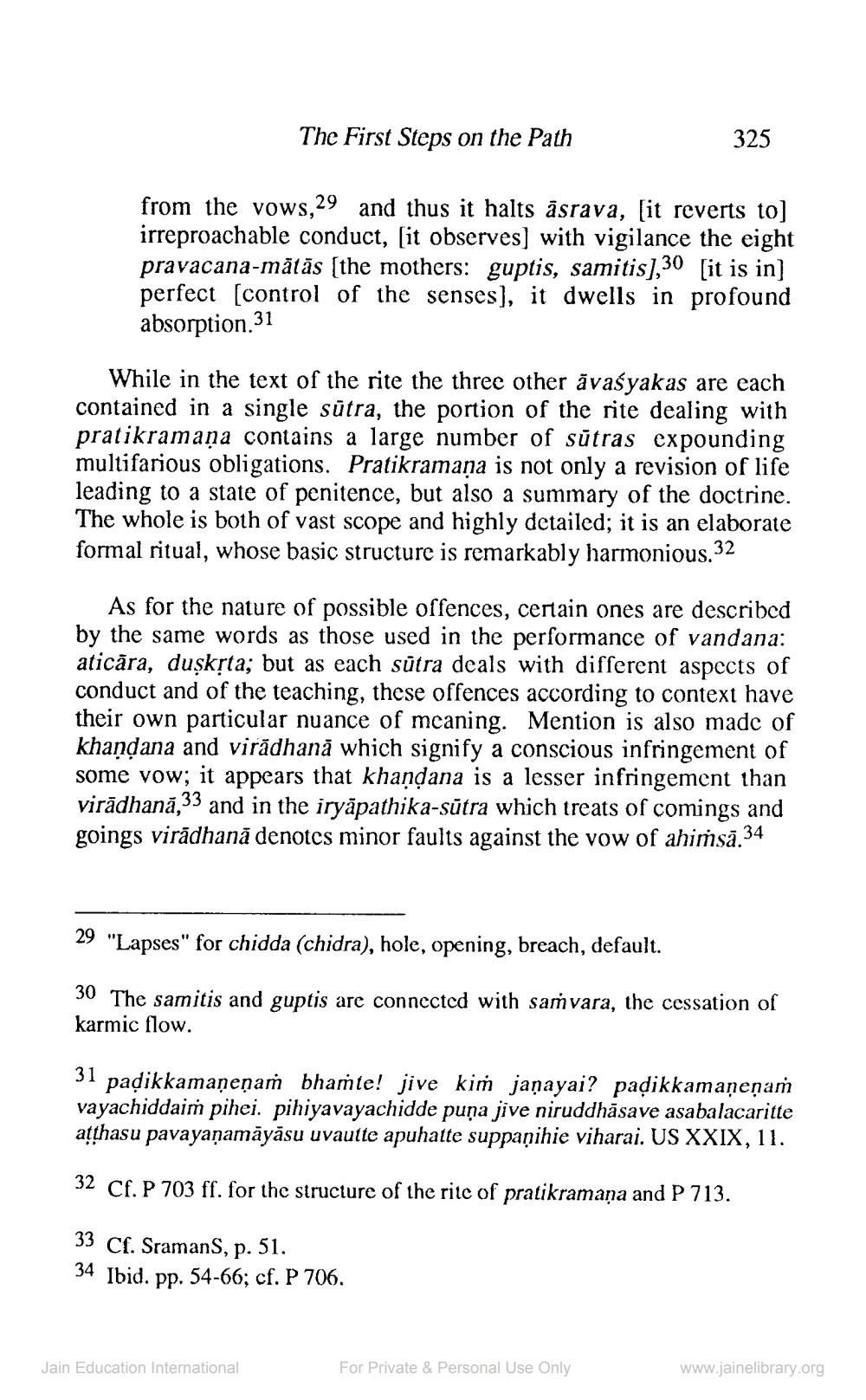________________
The First Steps on the Path
from the vows,29 and thus it halts äsrava, [it reverts to] irreproachable conduct, [it observes] with vigilance the eight pravacana-mātās [the mothers: guptis, samitis],30 [it is in] perfect [control of the senses], it dwells in profound absorption.31
While in the text of the rite the three other avaśyakas are each contained in a single sutra, the portion of the rite dealing with pratikramaṇa contains a large number of sūtras expounding multifarious obligations. Pratikramaņa is not only a revision of life leading to a state of penitence, but also a summary of the doctrine. The whole is both of vast scope and highly detailed; it is an elaborate formal ritual, whose basic structure is remarkably harmonious.32
325
As for the nature of possible offences, certain ones are described by the same words as those used in the performance of vandana: aticăra, duşkṛta; but as each sutra deals with different aspects of conduct and of the teaching, these offences according to context have their own particular nuance of meaning. Mention is also made of khandana and viradhana which signify a conscious infringement of some vow; it appears that khaṇḍana is a lesser infringement than virādhanā,33 and in the iryapathika-sūtra which treats of comings and goings virādhanā denotes minor faults against the vow of ahimsā.34
29 "Lapses" for chidda (chidra), hole, opening, breach, default.
30 The samitis and guptis are connected with samvara, the cessation of
karmic flow.
31 padikkamaṇeņam bhamte! jive kim janayai? padikkamaṇeṇam vayachiddaim pihei. pihiyavayachidde puna jive niruddhasave asabalacaritte atthasu pavayaṇamāyāsu uvautte apuhatte suppaṇihie viharai. US XXIX, 11.
32 Cf. P 703 ff. for the structure of the rite of pratikramana and P 713.
33 Cf. SramanS, p. 51.
34 Ibid. pp. 54-66; cf. P 706.
Jain Education International
For Private & Personal Use Only
www.jainelibrary.org




